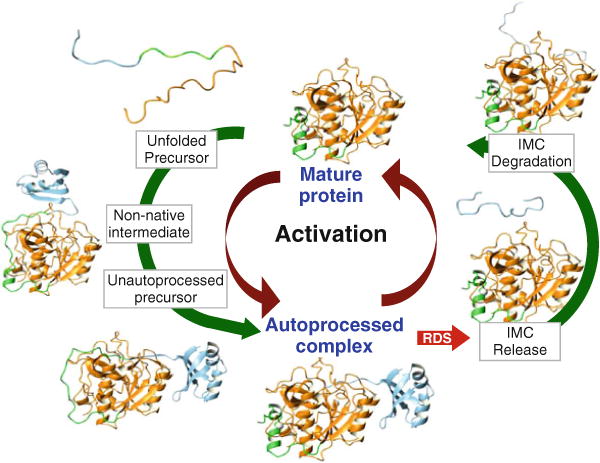Fig. 4.5.

IMC-mediated SbtE maturation – N-terminal helix of protease (green); calcium ion (white). Maturation of Pro-SbtE occurs in three stages: (1) A non-native top-on interaction between the protease (orange) and IMC (blue) punctuates the transition of the precursor from the unfolded state to a structured state (unautoprocessed precursor). (2) Once the active site is formed, the precursor autoproteolyzes to an inhibited, autoprocessed Pro:SbtE complex. (3) The release and degradation of the IMC from the complex release active protease that can subsequently trans-activate other proteases. Activation is the rate-limiting step to maturation.
